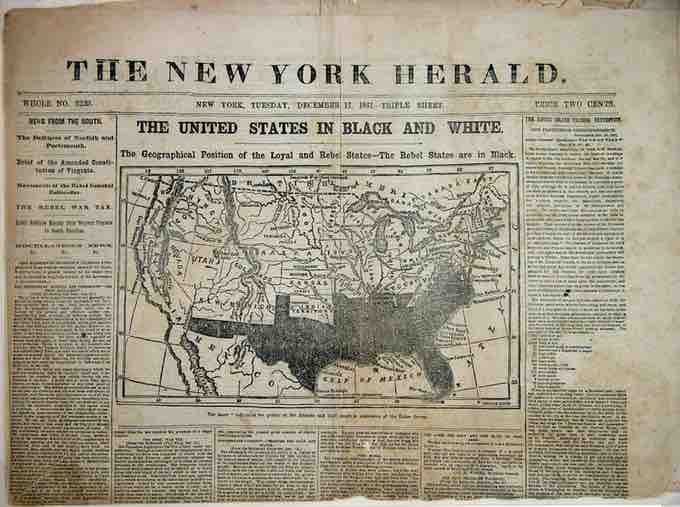Advances in forms of communications greatly expanded in the United States during the early 1800s. The penny press and the electrical telegraph were among the innovations that emerged during this communications revolution.
Newspapers
In the early 1800s, newspapers were largely meant for the elite. They generally took two forms: mercantile sheets intended for the business community, which contained ship schedules, wholesale product prices, advertisements, and some foreign news; and political newspapers, which were controlled by political parties or their editors as a means of sharing their views with elite stakeholders. Journalists reported the party line and editorialized in favor of party positions.
Mass production of inexpensive newspapers became possible due to the shift from handcrafted printing to steam-powered printing. In 1833, the first "penny paper," the Sun, was founded in New York. Penny papers—specifically targeting the working class urban population—quickly became widespread. The cheap sensationalized news sources covered crime, tragedy, adventure, and gossip, and these newspapers easily shifted allegiance on political issues. The changes made during the Penny Press era set the standards for all future newspapers, and those standards are still implemented today.

The New York Herald Penny Press, 1861
The penny press revolutionized journalism in the 1830s.
Electrical Telegraph
In 1836, Samuel Morse and Alfred Vail developed an electrical telegraph capable of transmitting text messages over long distances using wire. Together, they developed the Morse code signaling alphabet system.
In 1843, the U.S. Congress appropriated $30,000 to fund an experimental telegraph line from Washington, D.C., to Baltimore, Maryland. In May of 1844, Morse made the first public demonstration of his telegraph, sending the famous message, "What hath God wrought?" The Morse-Vail telegraph was quickly deployed in the following two decades. Improved communication systems fostered the development of business, economics, and politics by allowing for dissemination of news at a speed previously unknown.